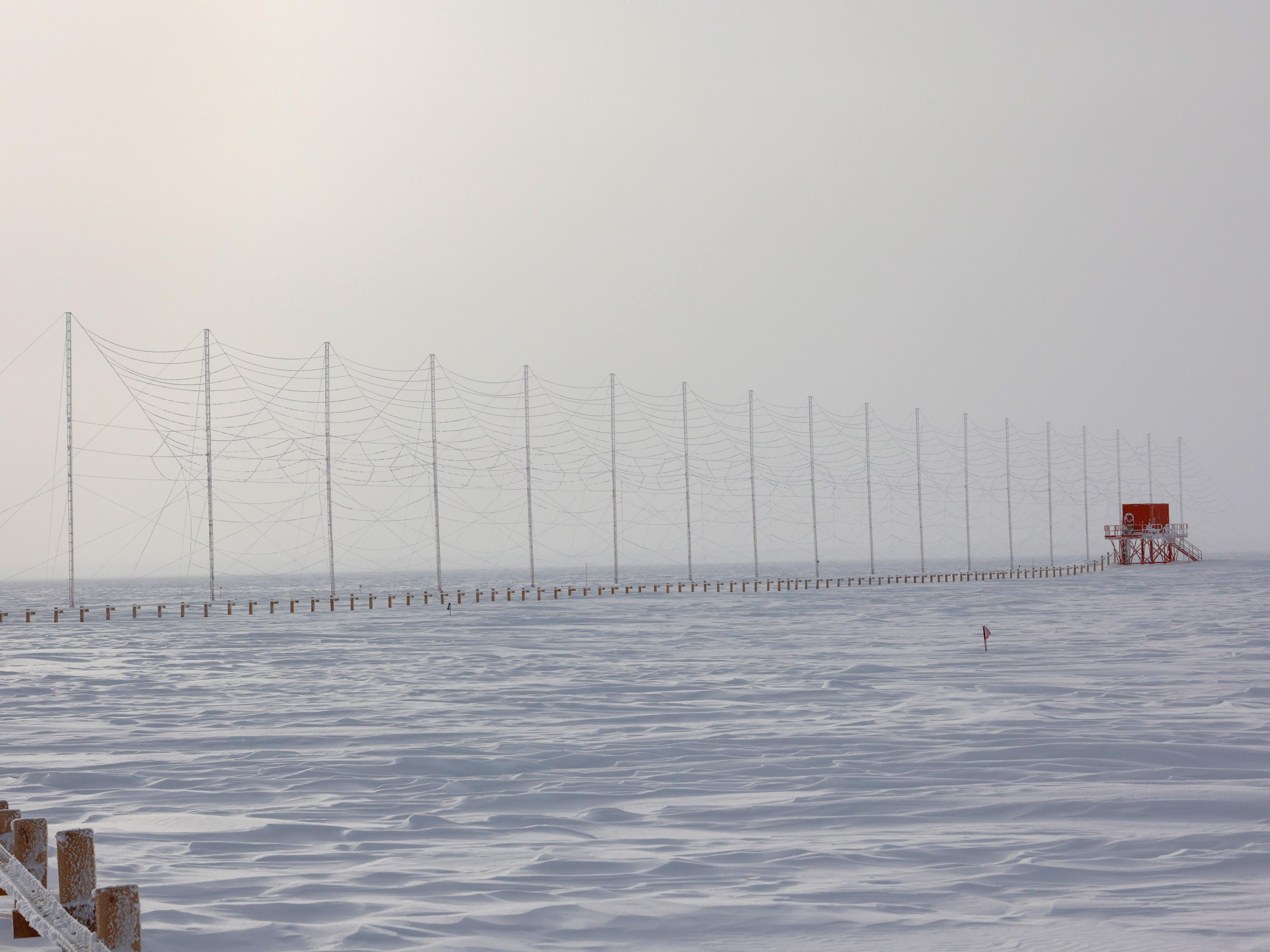- Acronimo
- OSS-09 SuperDARN
- Codice
- PNRA14_00085
- Anno
- 2016
- Area di ricerca
- Universe
- Tematica specifica di ricerca
- Studio del sistema magnetosfera-ionosfera, nell'ambito delle relazioni Sole-Terra (SpaceWeather)
- Regione di interesse
- Dome-C
- Sito web progetto
- https://superdarn.ca/
- PI
- Stefano Massetti
- Istituzione PI
- Istituto Nazionale di Astrofisica - Istituto di Astrofisica e Planetologia Spaziali di Roma (INAF-IAPS)
- Sito web istituzionale
- http://www.iaps.inaf.it/
- Altre Istituzioni e soggetti coinvolti
- Consiglio Nazionale delle Ricerche (CNR)
- Consistenza del team ricerca
- Ricercatori 2 Tecnologo 1 Tecnici 5
- Stato progetto
- In corso
- Stazioni principali usate
- Concordia
- Il progetto
The Dome C East (DCE) and Dome C North (DCN) are High Frequency (HF) radars located at the Concordia research station in Antarctica. DCE and DCN are part of Super Dual Auroral Radar Network (SuperDARN). SuperDARN is an international network of HF ionospheric radars dedicated to the study of the magnetosphere-ionosphere system, in the framework of near-Earth space plasma processes and Sun-Earth relations (Greenwald et al. 1995; Chisham et al. 2007; Nishitani et al. 2019). SuperDARN comprises more than 30 radars placed at high and mid-latitudes in the two Hemispheres. In SuperDARN, pairs of radars typically located at 2000 km distance and oriented so that their beams cross each other over the region to be studied are used to get the ionospheric plasma velocity vector in two dimensions. The two companion radars DCE and DCN are very close to each other (about 500 m) and nearby the South geomagnetic pole. DCE and DCN form a common-volume pair with the SuperDARN South Pole radar (U.S.) and Zhong Shang radar (China), respectively. The DCE and DCN field of views extend over an area of the Southern Hemisphere polar cap and high latitudes regions of about 10×106 km2 making the DCE and DCN observations a fundamental contribution for the SuperDARN network. The SuperDARN radars, including DCE and DCN operate continuously. SuperDARN main data product are the instantaneous maps of the F region ionospheric convection from mid-latitudes to the polar caps of the Southern and Northern Hemispheres. More in general, SuperDARN observations provide important information on Earth's space environment status. Indeed, SuperDARN is a very important infrastructure for the Space Weather (SW) research. The importance of SuperDARN radars observations for SW research has become more and more evident in the last years. Besides the importance of the radars observations for the understanding of the phenomena underlying SW (SW enabling science), such observations are fundamental for SW models development, validation and initialization (e. g. Gordeev 2015) and for the characterization and nowcasting of the ionosphere conditions (e.g. Berngardt et al. 2018). The SuperDARN radars are managed in a coordinated fashion by sixteen institutes in ten countries (Australia, Canada, China, France, Italy, Japan, Norway, South Africa, United Kingdom and United States of America).
- Immagini
-
- Motivazione, importanza della ricerca
Il vento solare trasferisce continuamente energia al sistema magnetosfera-ionosfera attraverso processi di fisica del plasma che avvengono alla magnetopausa terrestre. Tale energia viene rilasciata durante le sottotempeste e le tempeste magnetiche, accompagnate da perturbazioni che possono danneggiare satelliti e linee elettriche ed interrompere le comunicazioni radio. La dinamica su grande scala della convenzione ionosferica dipende dall’orientamento del campo magnetico interplanentario, dalla pressione dinamica del vento solare, dall’angolo di dipolo del campo geomagnetico e mostra una asimmetria fra i due emisferi (Cousins and Shepherd, 2010). Variazioni della convezione sono dovute anche, per esempio, ad eventi di trasferimento di flusso alla magnetopausa (Neudegg et al., 2001), impulsi di pressione dinamica del vento solare (Coco et. 2011), getti di plasma supermagnetosonici che impattano sulla magnetopausa (Hietala et al., 2012), pulsazioni ULF (1mHz-1 Hz) presenti nella magnetosfera o nel vento solare (Fenrich, et al., 1995). Si evince dunque che la rete di osservatori SuperDARN, rivolta allo studio della ionosfera di alta latitudine, è uno strumento di osservazione molto importante per lo studio dello spazio circumterrestre, laboratorio naturale insostituibile per l’osservazione di fenomeni fondamentali di fisica del plasma. Infine, nel contesto della Meterologia Spaziale, SuperDARN ha acquistato negli anni un’importanza crescente.
- Obiettivi della proposta
- Attività svolta e risultati raggiunti
- Prodotti
